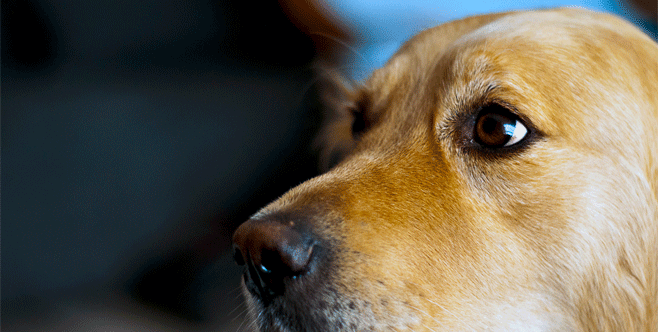Dogs have a superior sense of hearing to us and can hear a range of sounds far above the capabilities of the human ear. Selective breeding of dogs over the centuries has further enhanced the sense of hearing in certain breeds and has helped them to perform specialised tasks, such as guarding flocks, flushing out game and protecting property.

Dogs' ears consist of four parts: the ear flap, the ear canal, the middle ear, and the inner ear. The ear flap is made of cartilage, muscle and skin and varies in shape from breed to breed. It captures sound and funnels it through the ear canal to the tympanic membrane (eardrum). The middle ear contains the smallest bones in the body and these are the hammer, anvil, and the stirrup. These bones amplify vibrations from the eardrum and transmit them to the inner ear. Vibrations enter the spiral-shaped cochlea in the inner ear where they are converted into signals that are then sent to the brain. The organs that provide a dog with information about the alignment of its head and give it a sense of balance are also found in the inner ear. Dogs hear better than humans at both a lower volume and a higher frequency. The silent dog whistle emits sounds at an ultrasonic frequency that we cannot hear at all. In the wild, the dog's ability to hear high pitch sounds helps it to hear, track and locate the sounds of small prey such as mice and rabbits that make high-pitched squeaks.

Dogs' sense of hearing is also enhanced by their ability to move their ears around to scan the environment for different sounds and locate where the sound is coming from more accurately. Their highly mobile ears 'capture' sounds and funnel them down to the eardrum. This enables them to hear sounds four times farther away than humans can. A dog might cock one ear to capture an initial sound, and then direct both ears towards the source to catch the maximum amount of sound waves. Experiments show that a dog can locate the source of a sound in six-hundredths of a second. Short-coated breeds of dog with large, upright ears tend to have the best sense of hearing. When training your dog, remember that he, or she, should have a better sense of hearing than you, and there is no need to use a loud voice to get its attention. If your dog fails to carry out your instruction, it is not usually because it didn't hear you. If you are at all concerned about your dog's hearing, have it checked over by your vet as ear problems are common in dogs and should be treated promptly to avoid complications.













